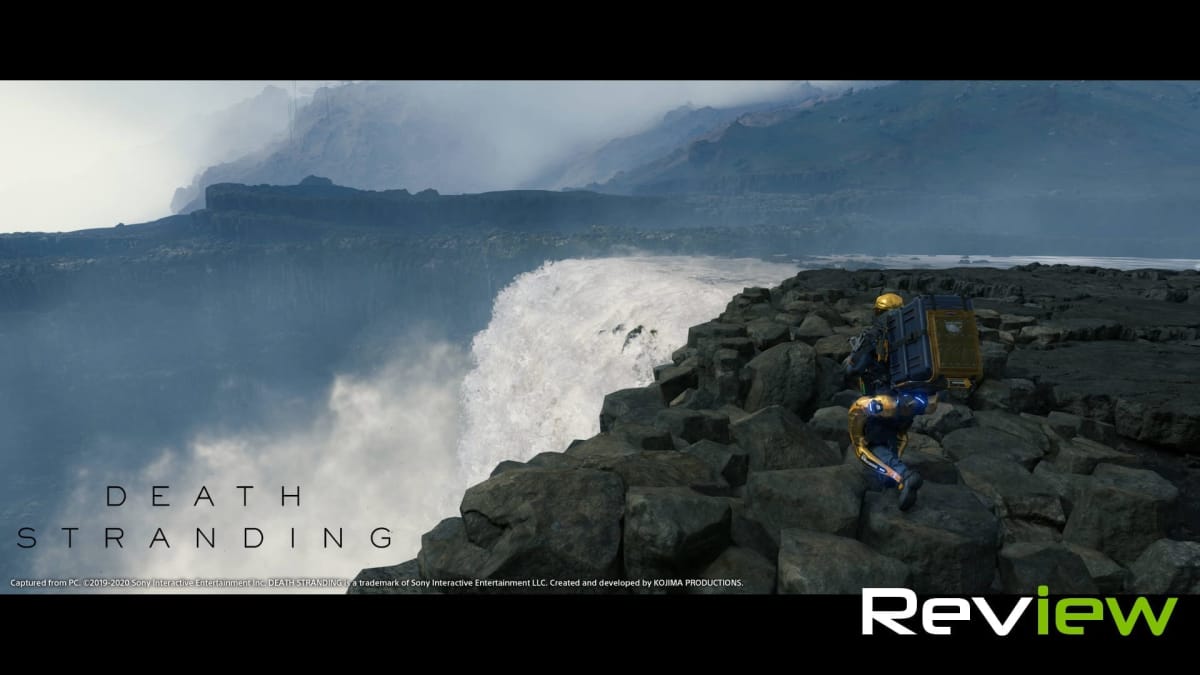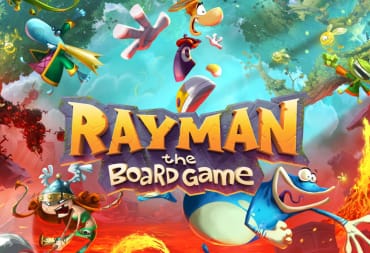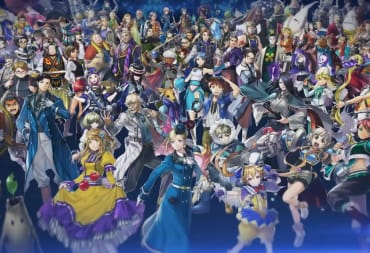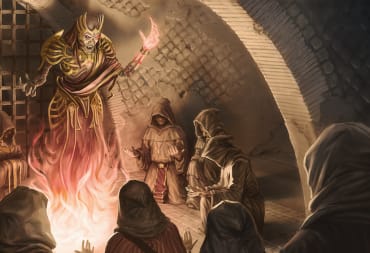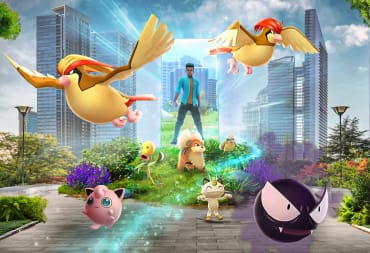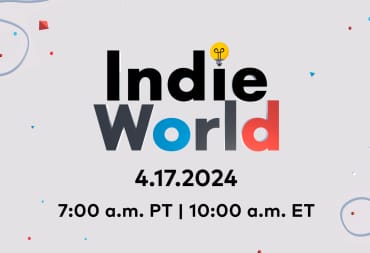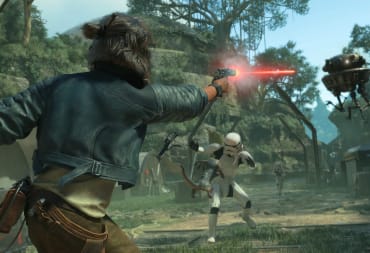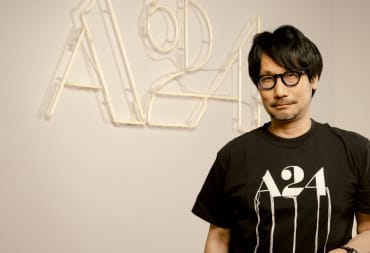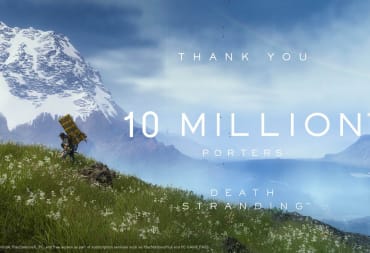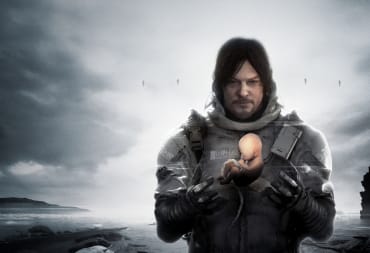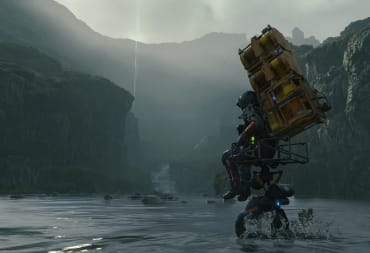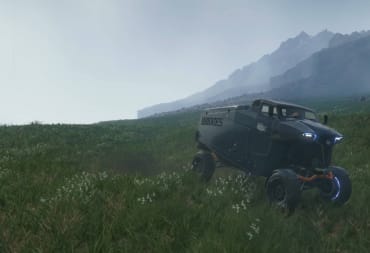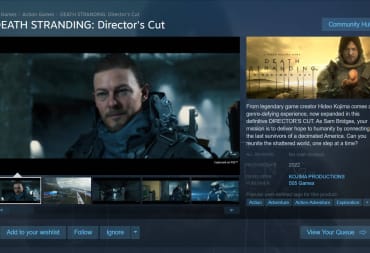Death Stranding was built with the intention of defying what we understand video games to be. Most action games are built on the premise of using a "stick" to beat people away. Creator Hideo Kojima has set aside the stick and handed players a rope in the hopes that they choose to tie together, rather than to break apart. His dedication to this theme is the foundation of every piece of Death Stranding, from the gameplay to the story to the social features. Players will learn the power of the rope over the stick. This game is about building connections with real people, fighting to help each other, and suffering to reduce the suffering of others. And yes, there will be a lot of walking.
These Boots Were Made for Walkin'
Many players coming into Death Stranding may think it's a literal walking simulator; this is absolutely not the case. I would loosely describe it as a third-person action-adventure game with stealth and horror elements. Kojima takes many of the mechanics and conceits we subconsciously consider to just be a "video game thing" and either tosses them aside or totally inverts them. The broad gameplay loop includes receiving an order from a terminal, deciding how to attach your packages to maintain balance, and setting out across the hell-stricken landscape to deliver. Your orders range from food and water to medicine and electronics, all of it necessary to sustain life. This sequence becomes addictive and traversing the rough terrain becomes fun in its own right.
The most basic obstacle in Death Stranding is indeed the walking. Players must carefully choose their routes to weave around small rocks and hills that are, at the beginning, a death sentence. Balancing Sam's body while he crosses this difficult terrain is an ever-present challenge. Wraith-infested areas and camps of MULEs (raiders) dot the landscape, adding to the already daunting number of things to keep in mind while delivering a package. You can stealth around the MULEs, but as I'm not fond of stealth games I chose to use non-lethal weapons to attack and round them up. The Bola Gun is a rope cannon, and firing it at MULEs ties them up in a satisfying knot and allows you to explore the region freely. Alternatively, you can attack and kill them with a wide variety of assault weapons and explosives. In the world of Death Stranding, bodies left out in the world cause a "voidout" and a game over unless they are brought to an incinerator. Besides it being a hassle, I found the idea of killing anyone to be directly in conflict with its central theme. You can also fistfight MULEs and knock them unconscious if you don't have any weapons handy.
One of my few negatives to note is that the climbing mechanics can get very clunky, and two separate times I fell off a mountain because Death Stranding was unable to register my inputs with reference to the jagged rock wall. Sam also glitches out occasionally when attempting to scale a near-vertical slope, and I ended up trying to avoid climbing such cliffs.
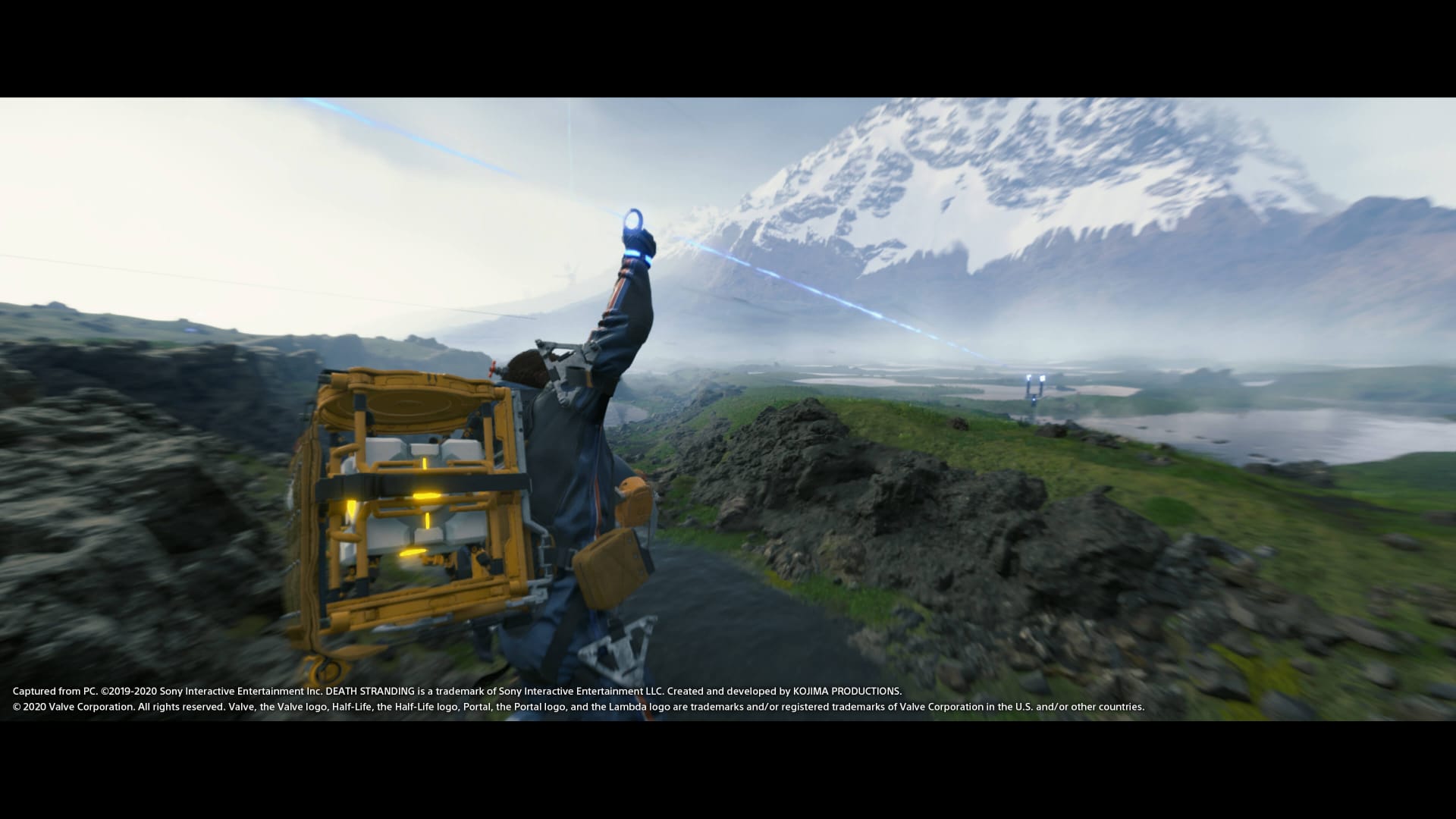
A Fascinating and Weird World
You may be tiring of post-apocalyptic worlds, but I assure you Death Stranding is like nothing you've ever seen before. In a catastrophic extinction event dubbed "The Death Stranding," the world of the living and the world of the dead collide with a force so great that most of humanity is destroyed. Words like "alive" and "dead" begin to lose all meaning as living humans are tossed across the chasm to the world of the dead and long-dead beings are thrown into the world of the living. The Beached Things (BTs) present themselves as wraiths, tied by astral umbilical cords to the world of the dead. Now the BTs stalk the husk of the earth, ready to consume anything living they can get their hands on. I'm impressed with how fresh this pseudo-horror setting feels amid the deluge of post-apocalyptic games in the last few years. Death Stranding is still partially a horror game; I've played quite a few horror games but trying to sneak through BT-infested areas as they swirled and howled around me invoked genuine terror in me. Horror segments are spaced out well, and they never interrupt the flow of the story.
Hideo Kojima has intricately crafted the broad strokes of Death Stranding's story to keep the surprises coming. Every so often a story beat would reveal something unexpected and remind me I didn't have anything close to the full picture. Each new chapter yanked away any understanding I had about how the world worked, creating a compelling narrative that kept me second-guessing myself at every turn.
Line-to-line, the dialogue, can be strange and awkward at best. Others may find it off-putting, but I feel that it adds to the charm and weirdness of it all. Some characters have strange, erratic catchphrases that constantly change. Others explain things Sam already knows one minute and explain completely irrelevant details about how BBs work the next. Kojima's overarching message of "we are stronger together" is often sloppily thrown into dialogue with no context, but with such heartfelt determination that I found it more motivating than disconcerting. Deadman introduces himself as such: "I'm Deadman. I'm a man and I'm good with the dead." Death Stranding is campy and weird, but like Twin Peaks or Buffy The Vampire Slayer it leans into its campy weirdness to create something charming and passionate.
In the wake of the apocalypse, Americans retreated back into the major cities and scurried underground, lest they're consumed by the timefall (rain that rapidly ages anything it touches). The United States of America is no more, and only a disconnected set of cities and a wide array of doomsday preppers remain. Right away, Death Stranding hones in on the themes of isolation and connection. The internet has been decimated, and communication between locations has ceased. Humans depend on couriers to move things from one location to another, bring news, and keep them tethered to society. Enter Sam Porter Bridges.
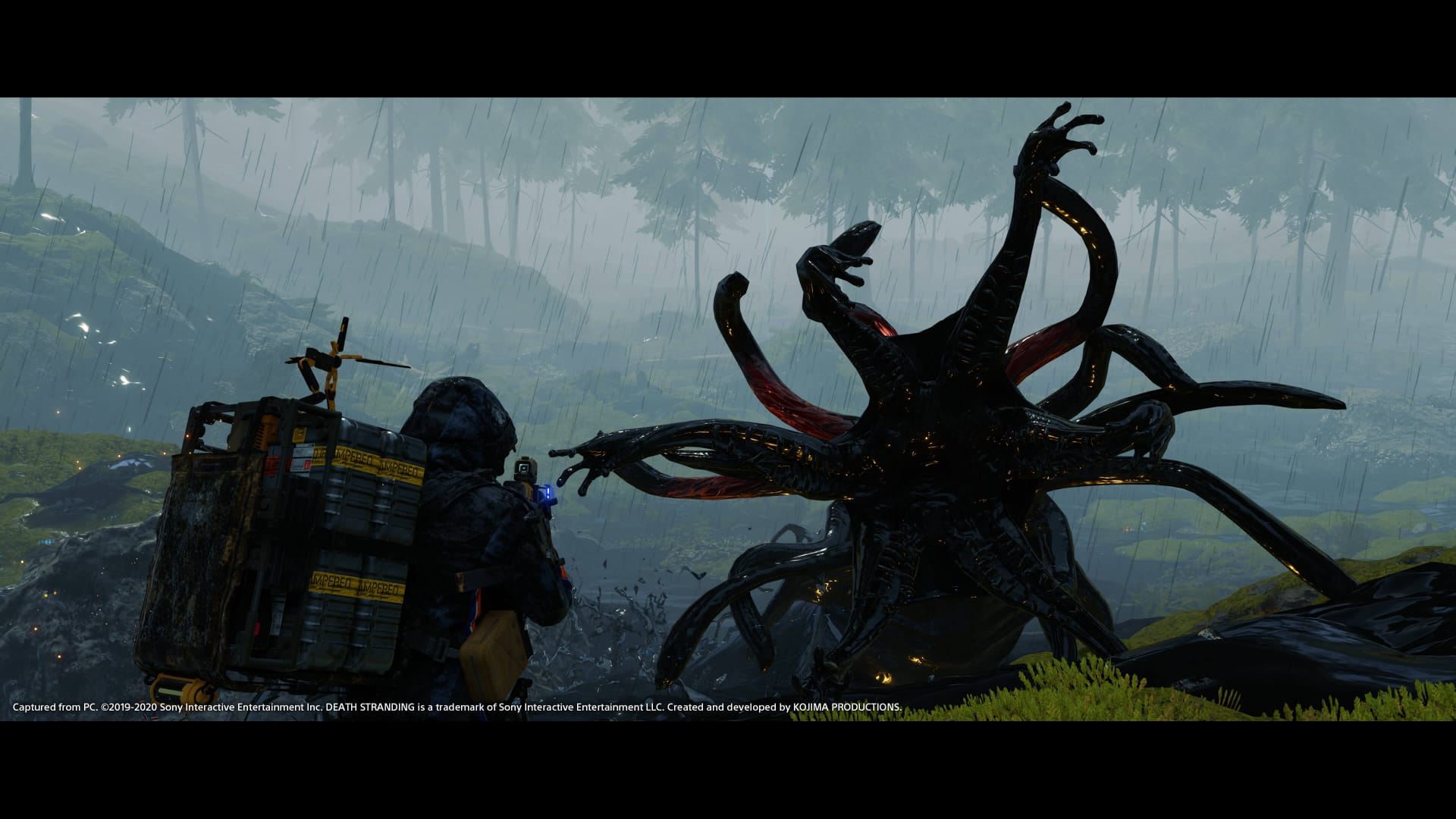
Systems on Systems
Death Stranding presents the player with over a dozen systems to track at once, ranging from weight and battery consumption to BBs mental state and cargo degradation. It sounds like a lot, but the progression of Death Stranding feels so perfectly curved that I didn't even notice how much I had learned over time. Each system becomes second nature by the time the player must learn to consider another one. Players can also upgrade and fabricate new weapons, gear and vehicles as they progress.. Death Stranding is pretty definitively not an RPG, but as a fan of hardcore RPGs with complex overlaid systems, I fell in love.
Death Stranding boasts some of the most tightly controlled progression in a video game. Your first delivery is focused entirely on learning to balance Sam as he walks and the basics of climbing over obstacles. Your next delivery takes you through a river and teaches you how to scan for navigable water, but you'll still need to balance yourself and climb over rocks just the same. The next delivery takes you into MULE territory and teaches you about stealth, but you'll still need to cross rocks, rivers, and hills as well as balance yourself. And so it builds, on and on, each delivery necessitating the player to utilize every one of the skills they've learned already, never throwing mechanics to the wayside. I have not found Death Stranding to be a relaxing time where I can just turn my brain off and listen to a podcast. The simple act of delivering packages requires the player to constantly be aware of how these systems are interacting. Death Stranding never once dropped my full attention, because I became so focused on the basic gameplay loop. The actual, simple act of just walking from one place to another is fun. The reward is in the journey itself; Kojima has made walking some of the most fun I've had in a game in years.
A Brand New Type of Social Experience
Although Death Stranding is a single-player campaign, it necessitates a connection to the internet. It is here that Kojima's purpose begins to take shape; the theme of "we are stronger when connected" bleeds into every aspect of gameplay. As Sam reconnects the chiral network and puts America back online, portions of the map connect to the grid. This means that the player can build structures like generators, rain shelters, player homes, zip lines, bridges, roads, etc using a PCC kit to 3D print structures out in the world. Once another player connects that same area to the grid in their own game, there's a chance that your structure will appear in their world, and vice versa.
You can also collect lost cargo from other people's games and request deliveries from other players. Once, I desperately needed a floating carrier but didn't have the resources. I estimated I'd arrive at the Distro Center West of Lake Knot City in about 30 minutes, so I requested that someone deliver a floating carrier. Lo and behold, it was waiting for me when I arrived! I felt loved at that moment; some stranger had put aside what they were doing and spent 30 minutes of their time bringing me this carrier for no reward or recognition.
Each structure has the name of the player floating above it, and you can "Like" other players' structures if they helped you. I cannot begin to count the number of times other players' structures saved my life. BTs are chasing me - I come upon a shelter. BB is crying, and my exoskeleton is sputtering out - there's a generator. My boots have worn out, and the MULEs are charging at me - but someone has left a motorcycle at the edge of the road for me. A ladder to cross a chasm, a belaying hook to scale a cliff, all left by strangers for strangers.
I felt truly connected to everyone else playing Death Stranding because everything I did had real-world implications. These were real people out there, with real goals and real aspirations. This infinite loop of everyone in the world delivering packages to each other, Liking each other's structures, and positively affirming each other was beautiful. If we all give, no one is left wanting.

Death Stranding Brought out the Best Me
For a portion of Death Stranding I tried to scrape by on other people's structures, but I quickly realized that I had more than I needed. I had more resources, vehicles and items than I needed. Death Stranding didn't push or pressure me into sharing, but I felt an obligation to do so anyway. I also had no control over whose worlds my structures would show up in, so I was never trying to "pay back" someone for a well-placed zip-line; Death Stranding only allowed me to pay it forward. It was in that giving without taking that I found its reason to be: Death Stranding is about finding happiness in giving and suffering so that others may receive and thrive.
About 25 hours in I reached Mountain Knot City and began a tedious traversal of the nearly impassable mountains. The first journey I made in the snowy peaks was absolute misery. BB was crying the whole time, I was running low on battery, BTs were crawling out of the ground every way I turned, my packages were corroding - and I was only traveling about 1,000 meters as the crow flies. This journey took me over an hour to complete, and my real-life hands were shaking and sweaty when I finished. But almost reflexively, I immediately picked up some PCCs and began building zip lines. All I could think was, "I will not let anyone go through what I went through." I was aware these zip-lines would only appear in others' worlds once they connected the chiral network on their end, but I still felt motivated to help my fellow porters in any small way I could.
I spent the next seven hours with the story on hold purely to build zip lines across the mountains I had already struggled across. I received no reward for this. No upgrades, no items, no commendation from characters in-game. But I did it because the conditions of Death Stranding brought out the best version of me. The version of me that has to give, must give, must suffer to ensure that no one else does. Dozens of people out there will have used my 15-point zip line network by the time of reading this, and I know in my heart they paid it forward, too. If we all give, no one is left wanting.

Award-Worthy Performances and Music
Norman Reedus stars as Sam Porter Bridges, a guy whose middle name is his profession and whose last name is the company he works for. Somehow, he still has the least nonsensical name of anyone in Death Stranding. Deadman (Guillermo del Toro), Die-hardman (Tommie Earl Jenkins), Heartman (Nicolas Winding Refn), Mama (Margaret Qualley), and Fragile (Lea Seydoux) round out a supporting cast of wacky, campy characters that act almost unbelievably serious.
Every actor lends not only their voice but body and facial motion capture as well. Everything you see was acted out by these talented folks in a real studio, bringing their exact likenesses, expressions, interactions, and body language to both cutscenes and gameplay. Critically acclaimed actors like Norman Reedus and Mads Mikkelson both give award-worthy performances as expected, but every single character brings a noteworthy and memorable performance. Every cutscene was so enthralling that I didn't mind that they were sometimes up to 30 minutes long. It felt like putting down the game for a moment to watch a high-budget sci-fi movie, and I couldn't take my eyes off the screen.
I must call specific attention to Troy Baker as Higgs, the villain of Death Stranding. He brought a particularly memorable performance as one of the most charismatic and engaging villains I've seen in recent years. He was so engaging that during the boss fights with him I often got distracted by his monologues and slipped up, although I suppose that's exactly what Kojima wanted. Baker did play Pagan Min in Far Cry 4, so he's no stranger to this kind of role.
The music of Death Stranding is gorgeous. Most of the soundtrack in-game was made by a group called Low Roar, and their atmospheric/electronic vocal soundscapes are haunting, to say the least. Each song pops up at exactly the right time, always enhancing the atmosphere of the surrounding environment. Whether it's a boss fight, hiding from MULEs, or just discovering a new city, the tone of the soundtrack nails it every single time. In addition, several artists contributed songs based on the world of Death Stranding to the soundtrack, such as CHVRCHES and Bring Me the Horizon. Death Stranding is unquestionably my pick for the best game soundtrack of 2019.
Death Stranding Uses the Video Game Medium in an Entirely New Way
In 2016, before we knew anything about Death Stranding, Kojima laid out his vision.
“The stick is the first tool that mankind created to put distance between himself and bad things – to protect himself. The second tool mankind created is a rope...to secure things that are important to you... Most of your tools in action games are sticks. You punch or you shoot or you kick. The communication is always through these sticks. I want people to be connected not through sticks, but through what would be the equivalent of ropes.”
Kojima posits a very basic thesis in Death Stranding. We are stronger together and weaker apart. It is obvious in retrospect that Death Stranding is built around one idea. The world, the story, and the gameplay were all crafted specifically to create an environment in which this theme could thrive. You may think "that message isn't new, everyone knows that," and you'd be right. But that message has never been conveyed in such a tangible way before. You may not become a better person by playing this game, but you will see the absolute best of yourself appear to aid your fellow players. Hideo Kojima transcends not only what a video game can be, but what media as a whole can be.
Death Stranding is a game in which you will choose to suffer to lessen the suffering of others, over and over again, whether they be real human players or NPCs. It is in that suffering that you will find yourself capable of true altruism, of love, of compassion, of empathy for total strangers. You will give, and give, and give, and give and ask for nothing in return. It is in giving that we find happiness. It is in giving that we find our humanity.
TechRaptor reviewed Death Stranding on PC with a code provided by the publisher. Death Stranding is available on PlayStation 4 and PC via Steam or the Epic Games Store.
Review Summary
Pros
- Builds a Bond Between People Like Nothing Before
- Complex Overlaid Systems that are Fun to Master
- Outstanding Performances, Art and Music
- Basic Gameploy Loop is Addictive and Fun
Cons
- Climbing Mechanics Can Be Janky
- Dialogue Can Be Awkward and Strange
Have a tip, or want to point out something we missed? Leave a Comment or e-mail us at tips@techraptor.net
